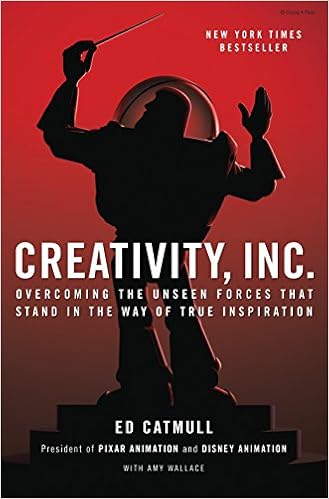Reading Level
What is the reading level of Creativity, Inc.: Overcoming the Unseen Forces That Stand in the Way of True Inspiration?
Analysing the books in the series, we estimate that the reading level of Creativity, Inc.: Overcoming the Unseen Forces That Stand in the Way of True Inspiration is 9th and 10th grade.
Expert Readability Tests for
Creativity, Inc.: Overcoming the Unseen Forces That Stand in the Way of True Inspiration
| Readability Test | Reading Level |
|---|---|
| Flesch Kincaid Scale | Grade 10 |
| SMOG Index | Grade 12 |
| Coleman Liau Index | Grade 9 |
| Dale Chall Readability Score | Grade 7 |
Reading Time
7 hrs 59 mins
How long to read Creativity, Inc.: Overcoming the Unseen Forces That Stand in the Way of True Inspiration?
The estimated word count of Creativity, Inc.: Overcoming the Unseen Forces That Stand in the Way of True Inspiration is 119,660 words.
A person reading at the average speed of 250 words/min, will finish the book in 7 hrs 59 mins. At a slower speed of 150 words/min, they will finish it in 13 hrs 18 mins. At a faster speed of 450 words/min, they will finish it in 4 hrs 26 mins.
| Creativity, Inc.: Overcoming the Unseen Forces That Stand in the Way of True Inspiration - 119,660 words | ||
|---|---|---|
| Reading Speed | Time to Read | |
| Slow | 150 words/min | 13 hrs 18 mins |
| Average | 250 words/min | 7 hrs 59 mins |
| Fast | 450 words/min | 4 hrs 26 mins |
- Authors
-
Ed CatmullAmy Wallace
More about Creativity, Inc.: Overcoming the Unseen Forces That Stand in the Way of True Inspiration
119,660 words
Word Count
for Creativity, Inc.: Overcoming the Unseen Forces That Stand in the Way of True Inspiration
12 hours and 52 minutes
Audiobook length
Description
From a co-founder of Pixar Animation Studios—the Academy Award–winning studio behind Coco, Inside Out, and Toy Story—comes an incisive book about creativity in business and leadership for readers of Daniel Pink, Tom Peters, and Chip and Dan Heath. NEW YORK TIMES BESTSELLER | NAMED ONE OF THE BEST BOOKS OF THE YEAR BY The Huffington Post • Financial Times • Success • Inc. • Library JournalCreativity, Inc. is a manual for anyone who strives for originality and the first-ever, all-access trip into the nerve center of Pixar Animation—into the meetings, postmortems, and “Braintrust” sessions where some of the most successful films in history are made. It is, at heart, a book about creativity—but it is also, as Pixar co-founder and president Ed Catmull writes, “an expression of the ideas that I believe make the best in us possible.” For nearly twenty years, Pixar has dominated the world of animation, producing such beloved films as the Toy Story trilogy, Monsters, Inc., Finding Nemo, The Incredibles, Up, WALL-E, and Inside Out, which have gone on to set box-office records and garner thirty Academy Awards. The joyousness of the storytelling, the inventive plots, the emotional authenticity: In some ways, Pixar movies are an object lesson in what creativity really is. Here, in this book, Catmull reveals the ideals and techniques that have made Pixar so widely admired—and so profitable. As a young man, Ed Catmull had a dream: to make the first computer-animated movie. He nurtured that dream as a Ph.D. student at the University of Utah, where many computer science pioneers got their start, and then forged a partnership with George Lucas that led, indirectly, to his co-founding Pixar in 1986. Nine years later, Toy Story was released, changing animation forever. The essential ingredient in that movie’s success—and in the thirteen movies that followed—was the unique environment that Catmull and his colleagues built at Pixar, based on leadership and management philosophies that protect the creative process and defy convention, such as: • Give a good idea to a mediocre team, and they will screw it up. But give a mediocre idea to a great team, and they will either fix it or come up with something better. • If you don’t strive to uncover what is unseen and understand its nature, you will be ill prepared to lead. • It’s not the manager’s job to prevent risks. It’s the manager’s job to make it safe for others to take them. • The cost of preventing errors is often far greater than the cost of fixing them. • A company’s communication structure should not mirror its organizational structure. Everybody should be able to talk to anybody.
